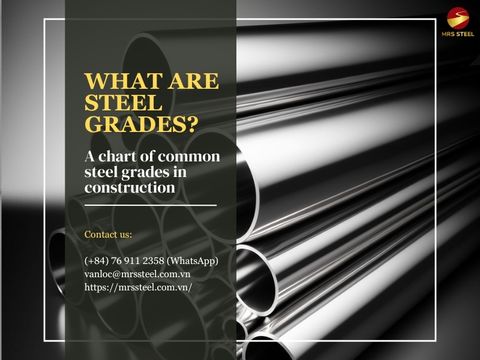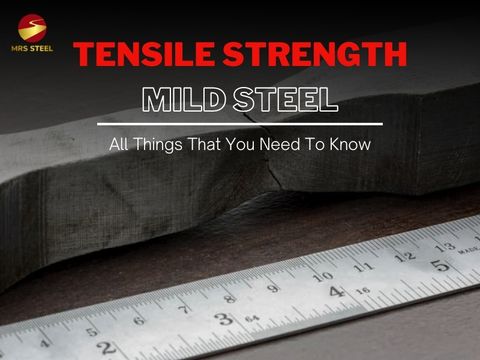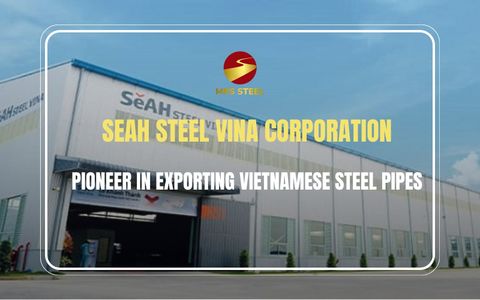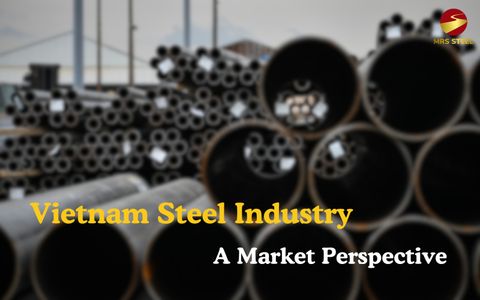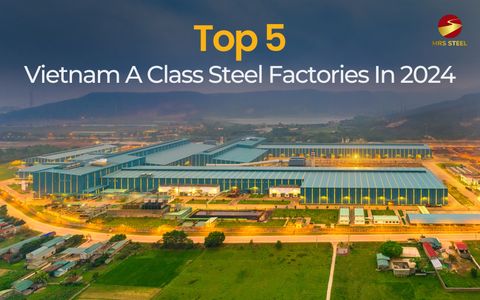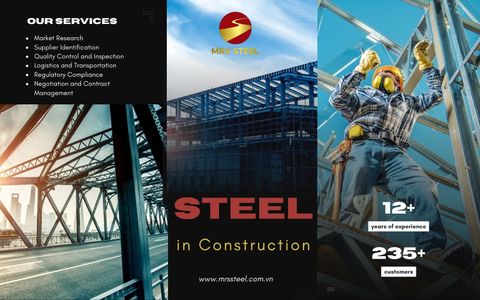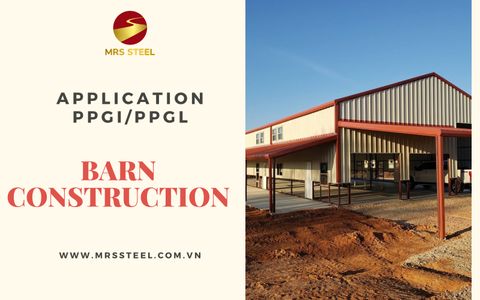The life cycle of steel: from the scrap production to its end-of life stage

BlogDate: 22-02-2024 by: Ngoc Cam
Today, environmental protection is one of the main goals of all activities and businesses aiming at sustainability, stability and community value. In addition to ways such as limiting the use of plastic and not littering, recycling steel is also one of the solutions that many people trust, especially in the construction industry. In this article, MRS Steel will analyze efforts to reduce the environmental impact of steel products throughout its life cycle of steel, from raw material exploitation to end-of-life stage.
1. Recyclability of construction steel
Steel is one of the most recycled materials in the world with 93% of all structural steel capable of being recycled into new products without losing its inherent properties, while only 8% of plastic is recycled. When using recycled steel, the production process can reduce electricity consumption by 80% compared to completely new production, while also reducing environmental impact and completely eliminating the exploitation of raw materials.
During the life cycle of steel, materials are recycled and used in many large and small projects with the construction method of prefabricated steel frames. This is a construction solution chosen by many investors because of its outstanding advantages such as saving time, labor costs, shortening the disassembly and assembly process,...

2. What is the life cycle of steel?
By understanding the life cycle of steel, we can take advantage of its infinite reusability to create sustainable economic and environmental values.
Collecting raw materials
For recycled steel, you can find sources such as factories, shipyards, large construction projects, ships,... around the world. This process also includes classifying and separating scrap steel from mixed materials so that the recycling process takes place quickly, minimizing residue.
Steel production
Steel factories focus on two common production processes: producing steel from iron ore in blast furnaces or from scrap in electric arc furnaces. With advanced technological improvements in production lines, CO2 emissions are reduced during the production phase.
Recycling leftover products
During the steel production process, there will be surplus products that can be reused such as slag, iron scrap,..., which act as a substitute for some raw materials, used for the next production stages. This both reduces waste into the environment and saves significant costs and time for production processes throughout the life cycle of steel.
Production of finished products
High-strength steel has superior properties compared to conventional steel structures because of its extremely good durability, impact resistance and corrosion resistance. Therefore, projects that require high bearing capacity such as factory frames, warehouse steel frames, cars,... often use high-strength steel to consume less material, optimize weight while still ensuring durability, safe in use.
Steel recycling
Finally, steel returns to its life cycle as post-consumer scrap. At this point, it has already finished its first life cycle and is ready to be recycled to begin the life cycle of new steel.
Steel is an industrial material that is recycled many times but still retains its properties, so there is no need to worry about reducing durability and safety when used for projects. Steel recycling not only contributes to reducing industrial waste in the world and protecting the environment, but is also a cost-effective solution for investors. Thus, steel scrap can be 100% recyclable and continues to exist forever throughout the life of the steel.

3. Some examples of the life cycle of steel
Steel is not only an environmentally friendly material but also an economical construction solution. The structures themselves can be constructed from many different types of recycled steel. Let's consider with MRS Steel which common applications best represent the life cycle of steel.
Automobile
Most of the car's structure is made from steel, so after long-term use, even though the car loses its usability, it can still be recycled. Currently, automotive steel is the largest source of recycled steel in the United States. After processing, this material continues to be used in the automobile manufacturing industry with durability and an average lifespan of up to 15 years.
Packaging and containers
One of the most common uses of steel that few people know about is packaging of goods. Food, wine, paint, crude oil, etc. are often preserved and transported in steel tanks to ensure product safety and quality when it reaches the user. Recycled steel is not only used to make containers, belts, etc., but can be manufactured into large containers and then recycled during the life of the steel to make other applications.
Steel structure
The use of wood as a building material can deplete natural resources, cause environmental disasters and cannot be recycled or recovered. Wood structures also generate more industrial waste, so steel structures are becoming increasingly popular in housing construction. Not only do they bring modern, sophisticated, cost-effective aesthetic beauty, but steel buildings can be completely recycled after they stop being used.
Infrastructure project
Besides housing, steel is also the main material for projects such as bridges, roads, railways, silos, tanks,... Thanks to its high strength, steel is used for frames or roofing, providing high durability and ability to bear large loads. These structures, after long periods of use, may become degraded or need to be removed. At this time, steel materials can be recycled and used as materials for completely new projects, starting a circular steel life cycle.



